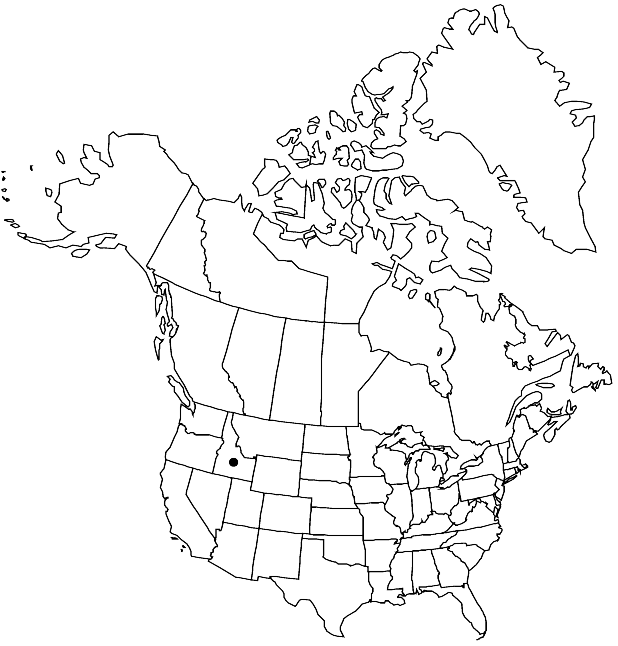Difference between revisions of "Noccaea fendleri subsp. idahoensis"
Syst. Bot. 29: 383. 2004.
FNA>Volume Importer |
FNA>Volume Importer |
Revision as of 20:24, 24 September 2019
Stems (0.3–)0.4–1.1(–1.2) dm. Basal leaves: petiole not differentiated from blade, about as long as blade; blade linear to narrowly oblanceolate, 1.1–4(–5) mm wide, base attenuate. Cauline leaves (2 or)3–7(–9). Racemes lax or slightly compact. Fruiting pedicels horizontal or subhorizontal, forming an angle more than 70º with rachis. Flowers: petals white, (3.4–)3.6–6 × 1–2 mm. Fruits only slightly winged, obovate or, rarely, elliptic, (4–)5–8(–9.5) × (2.5–)2.7–4(–4.5) mm, 1–2 times as long as wide, apex obtuse, truncate, or emarginate; style (0.5–)0.8–2(–2.5) mm. Seeds 2–8 per fruit. 2n = 14, 28.
Phenology: Flowering Jun–Aug.
Habitat: Alpine or subalpine slopes, meadows, rocky crevices, rocky and gravelly soil in valleys, steep slopes, knolls
Elevation: 2100-3700 m
Discussion
Subspecies idahoensis is restricted to Blaine, Boise, Custer, Elmore, and Valley counties of central Idaho. Holmgren treated it as a variety of Thlaspi montanum, whereas R. C. Rollins (1993) recognized it as a species, T. idahoense, with two varieties. In my opinion, his varieties are based on continuous characters such as the loosely versus closely branched caudex, oblanceolate versus linear-oblanceolate basal leaves, and cuneate versus minutely auriculate distalmost cauline leaves.
Selected References
None.
